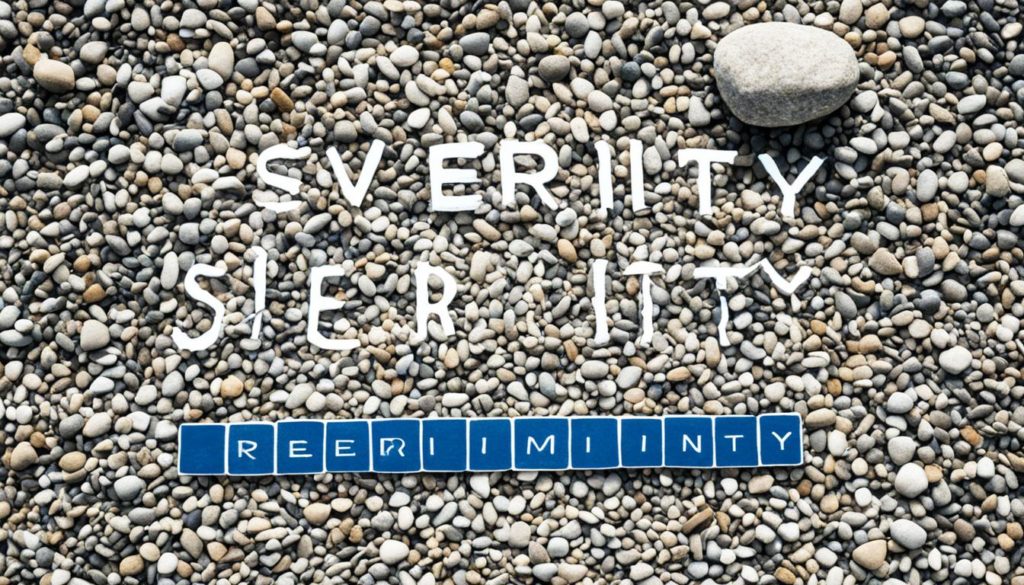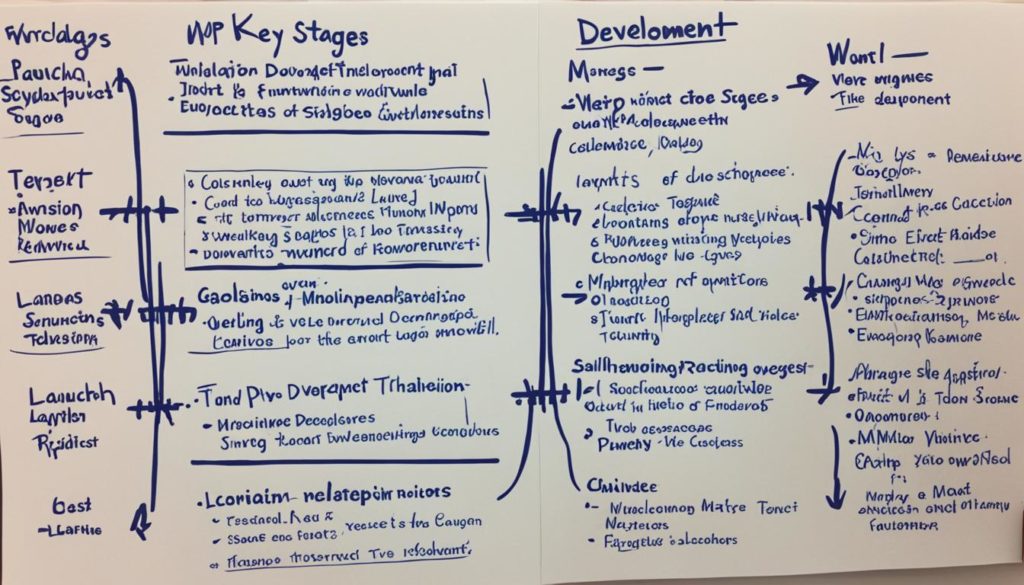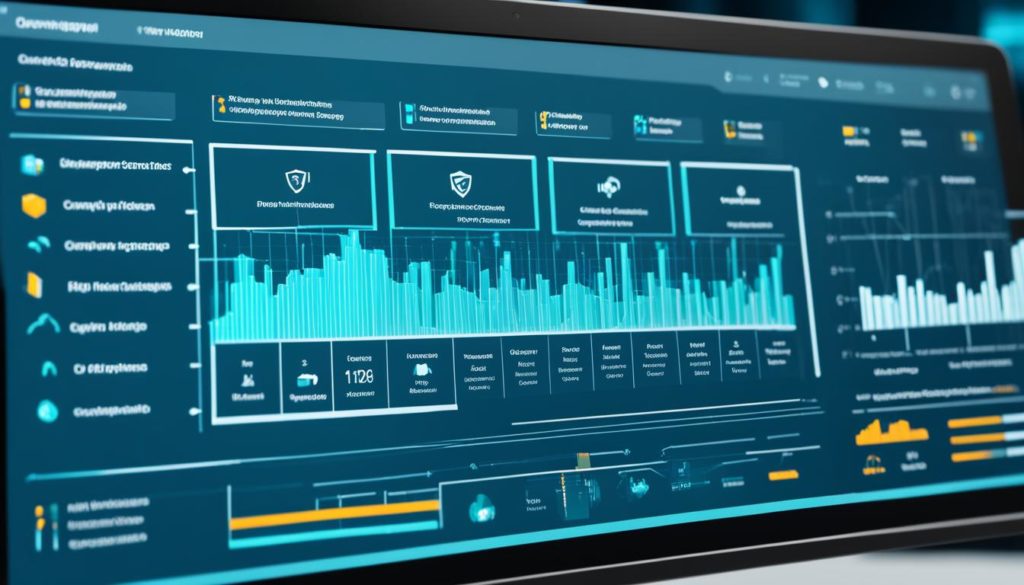
Did you know that teams using agile project management do 28% better than those using old methods? This shows how important agile is for managing projects today. It helps teams work better together by breaking big projects into smaller tasks.
Agile project management is more than just a trend. It changes how we do tasks and makes sure clients are happy. We’ll look into the key skills needed for success. We’ll cover basic principles, learning, and adapting to improve team performance and success.
Key Takeaways
- Agile project management increases project success by 28%.
- Understanding agile principles is crucial for effective project management.
- Breaking down projects into smaller parts boosts efficiency and collaboration.
- This approach ensures better client satisfaction through regular feedback.
- Adapting strategies and continuous learning are vital for sustained success.
Understanding Agile Project Management
Agile project management is all about speed, flexibility, and making customers happy. It’s different from old-school project management, which moves in a straight line. Agile is great when projects change a lot and customer needs shift often.
Definition and Core Principles
Agile project management is built on important core principles of Agile. These principles focus on delivering small, useful parts of a project. They include:
- Customer collaboration over contract negotiation
- Responding to change over following a set plan
- Individuals and interactions over processes and tools
- Working software over comprehensive documentation
This method ensures continuous feedback, progress in steps, and agile software development are key to planning and doing projects.
Agile Manifesto: Key Values and Principles
The Agile Manifesto was made by leaders in the field. It sets out four main values and twelve principles for agile software development. The values focus on:
- Individuals and interactions
- Working software
- Customer collaboration
- Responding to change
These values help teams handle complex projects and adjust to new needs.
Agile vs. Traditional Project Management
Agile and traditional project management are different in many ways. Traditional methods go step by step, which can make projects inflexible. Agile, on the other hand, uses a cycle and works together, making it easier to adapt to changes and feedback.
This adaptability is very important in today’s fast business world. By following Agile’s core principles, teams can be more innovative, improve product quality, and deliver value to customers on time.
Essential Agile Project Management Methodologies
Agile project management uses various methods to boost flexibility and efficiency. Scrum, Kanban, and Lean are top choices for their unique ways to meet these goals. They help teams produce quality work and quickly adjust to new needs.
Scrum: A Popular Agile Framework
Scrum is a favorite for its focus on working in short cycles called sprints. Teams work together to keep moving forward with regular feedback. After each sprint, they review what they’ve done and plan the next steps.
Kanban: Visualize and Manage Tasks
Kanban uses a visual board to track tasks. This makes it easy to see what’s being done, find slow spots, and keep delivering value. It’s all about making the workflow better and setting priorities right, helping agile teams in fast-changing situations.
Lean: Maximizing Value and Minimizing Waste
Lean is all about cutting waste and making processes better. It aims to give the customer the most value while improving workflows. Teams using Lean get more efficient and effective, fitting well with agile’s focus on making things better and adding value.
Here’s a quick look at what these methods offer:
| Methodology | Key Features | Primary Focus |
|---|---|---|
| Scrum | Sprints, cross-functional teams, iterative development | Continuous improvement and collaboration |
| Kanban | Visual task tracking, work-in-progress limits, flow management | Workflow efficiency and value delivery |
| Lean | Waste elimination, process optimization, value maximization | Efficiency and process enhancement |
Using these agile methods, companies can better handle changes and meet project goals.
Key Skills for Agile Project Managers
Successful agile project managers need a mix of people skills and technical know-how. They must be good at team collaboration and critical thinking. This helps them handle the complex tasks of agile projects.
Adaptability is key for agile project managers. Projects change often, and being able to adjust quickly is crucial. This skill greatly affects the success of a project.
Good communication skills are vital for agile project managers. They need to share information clearly. This makes sure everyone on the team is working together well.
Here’s a breakdown of essential skills:
| Skill | Description |
|---|---|
| Adaptability | Responds well to change and unexpected challenges |
| Team Collaboration | Creates synergy among team members to reach project goals |
| Communication | Articulates complex strategies clearly and ensures alignment |
Skills like prioritizing tasks and aligning them with goals are also key. Being good at planning and managing risks helps managers lead projects to success. Working well with stakeholders and solving problems are also crucial for a smooth workflow.
Learning these skills will help you manage agile projects better. It ensures your team works well together and achieves project goals.
Top Tools and Software for Agile Project Management
Using agile project management tools can make teams work better together and improve project results. Let’s look at the top choices:
Task Management Tools: Jira, Trello, and Asana
Managing tasks well is key in agile projects. Tools like Jira, Trello, and Asana help organize work.
- Jira: It has strong features for agile methods, aiding in planning, tracking, and managing releases.
- Trello: Trello uses visual boards and cards for easy task organization, great for simple teams.
- Asana: Asana is known for its detailed task assignments and tracking progress in real-time, promoting team work.
Communication Tools: Slack, Microsoft Teams, and Zoom
Good communication is key in agile project management. Slack, Microsoft Teams, and Zoom keep team members in touch.
- Slack: Slack is great for quick messages and sharing updates with its channels and integrations.
- Microsoft Teams: Teams works well with other Microsoft tools, offering chat, file sharing, and meeting features.
- Zoom: Zoom is perfect for video calls, making remote meetings easy for daily updates, planning, and reviews.
Feedback and Retrospective Tools: SurveyMonkey and Qualtrics
Retrospectives are important for getting better. Tools like SurveyMonkey and Qualtrics help teams get feedback.
- SurveyMonkey: It’s great for making surveys, helping teams get useful feedback after each sprint.
- Qualtrics: With its deep analytics, Qualtrics helps understand team dynamics and find ways to get better.
These agile project management tools help teams work better, communicate well, and keep improving. This leads to better project success.
Benefits and Challenges of Agile Project Management
Agile project management brings many benefits in today’s fast business world. It helps deliver projects quickly without losing quality. By using benefits of agile project management, teams can quickly meet changing needs and make sure the final product meets client expectations.
Faster Time to Market and Improved Flexibility
One big plus of agile project management is it lets projects hit the market faster. With regular updates, projects move forward step by step. This means teams can quickly change direction based on new feedback or market changes.
Enhanced Collaboration and Communication
Agile focuses on teamwork and clear communication. Daily meetings and regular updates keep everyone informed. This approach not only lifts team spirits but also makes the final product better, as everyone’s ideas are heard.
Risks and Mitigation Strategies
Agile also has its challenges, like scope changes, team issues, and burnout from constant updates. To tackle these, it’s important to have good mitigation strategies. For example, updating the project scope and having meetings to look back can keep the team focused and motivated.
| Agile Benefits | Agile Risks | Mitigation Strategies |
|---|---|---|
| Faster Time to Market | Scope Creep | Regular Scope Updates |
| Improved Flexibility | Team Burnout | Encouraging Work-Life Balance |
| Enhanced Collaboration | Misaligned Dynamics | Team-Building Activities |
In conclusion, while agile risks are there, using mitigation strategies can reduce them. By embracing agile, we get innovative solutions, great teamwork, and better project results.
Conclusion
Agile project management is key for companies wanting to succeed in today’s fast-changing world. It stands out because it focuses on adapting and working together. This makes teams flexible and ready to handle changes.
Agile teaches us to build teams that work well together. It promotes open talks at all levels of a company. By focusing on these values, companies can manage projects better and change to Agile more easily. For more info on Agile, check out Mooncamp’s Agile Project Management Blog.
Using Agile can bring big wins in being efficient, making customers happy, and staying ahead in the market. By following Agile’s main ideas, we set the stage for ongoing success and growth. Companies aiming for their goals should see Agile as a key part of managing projects. It helps with success in Agile and staying ahead in a changing market.
FAQ
What is Agile project management?
Agile project management is a way to manage projects that focuses on making progress in small steps. It helps teams work better together and deliver what customers want. This method is all about being flexible and making sure customers are happy.
What are the core principles of Agile?
Agile is all about putting people and their work first. It values working together, delivering results, and listening to customers. It also means being ready to change quickly.
How does Agile differ from traditional project management?
Agile is all about moving forward in small steps and being ready to change. It focuses on getting feedback and making sure customers are happy. Traditional methods follow a set plan and can struggle with changes in the project.
What is Scrum?
Scrum is a way to use Agile in projects. It uses short periods called sprints for teams to work together. This approach helps teams make progress, look back to improve, and adapt to changes.
How does Kanban work?
Kanban uses boards to show tasks and limits how much work is being done at once. It helps teams work better and deliver results continuously. This method makes sure work flows smoothly.
What is Lean project management?
Lean project management is about making projects more efficient by cutting waste. It aims to deliver great results without wasting time or resources.
What skills are essential for Agile project managers?
Agile managers need to be adaptable and great at communicating. They should be good at thinking critically, setting priorities, and organizing. They also need to help teams work together and solve problems.
What are some top tools for Agile project management?
For managing tasks, Jira, Trello, and Asana are great tools. For talking with your team, Slack, Microsoft Teams, and Zoom work well. For getting feedback, SurveyMonkey and Qualtrics are good choices.
What are the benefits of Agile project management?
Agile helps projects get to market faster and be more flexible. It improves how teams work together and communicate. It lets teams quickly adapt to changes and meet customer needs.
What challenges might we face with Agile project management?
Managing risks and coming up with good plans to deal with them can be tough. Knowing Agile well and being proactive helps overcome these challenges.
Future App Studios is an award-winning software development & outsourcing company. Our team of experts is ready to craft the solution your company needs.










